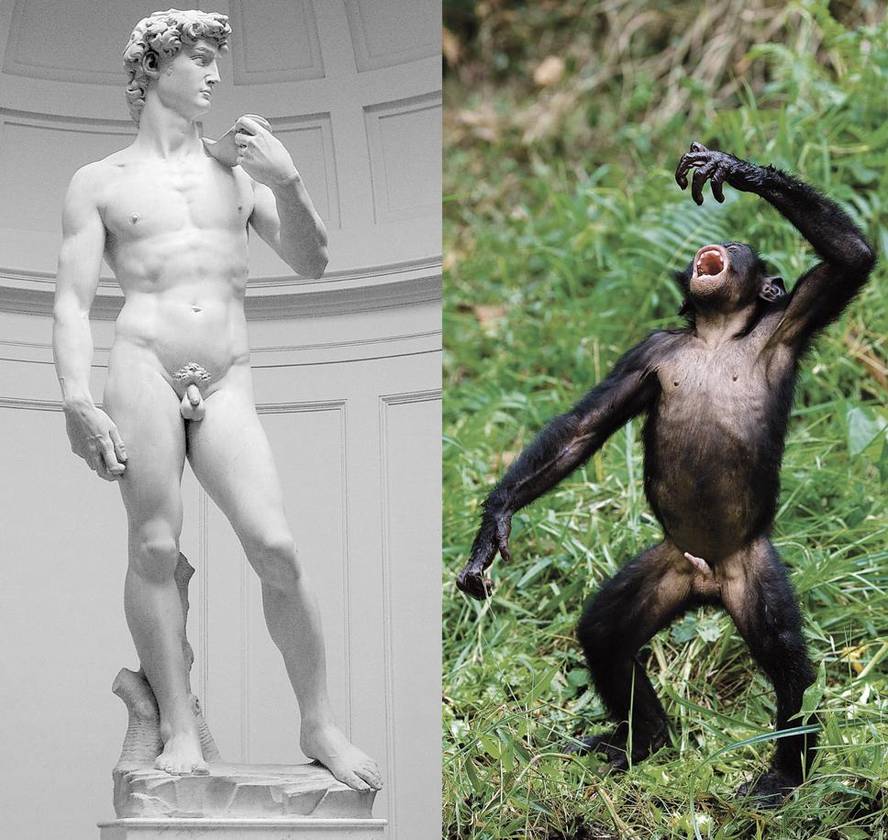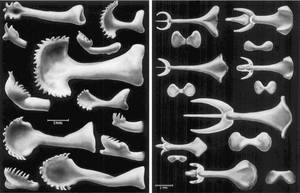If God wasn’t… then what was it?

In the September 2012 issue, an article "mugalari" was published in Elhuyar magazine. I say "limiting" because the subject of the article crossed the borders of certain fields of knowledge: religion, human anatomy, translation, mythology... The topic of the article was to analyze how a lack of man, a very widespread anatomical characteristic among mammals, the lack of penis bone, could be explained. In the technical language of anatomy, the penis bone is called Latin os penis or baculum (the stick derives from the same Latin word).
In the mythological explanation of why this lack was required the intervention of God. I found it interesting to analyze the topic from a scientific point of view. But in this case, when Napoleon asked Laplace how he did it in the great book Traité de Mécanique Céleste to explain the functioning of the universe without ever mentioning the Creator, I will bring Laplace's answer to Napoleon: Je n'avais pas besoin de cette hypothèse-là ("I didn't need this hypothesis"). That is, I also will not need God to scientifically explain the lack of penis bone. Yes, I will need to go through certain limitations, such as leaving the field of molecular biology and entering the broad field of evolution theory. Therefore, this article will also necessarily be "limiting".
In the question of the title of this article ("which..?") as implicitly mentioned to a person, having mentioned that I will not need God for explanation, I think the time has come to rewrite the question, because scientifically it will be more correct to ask: So what caused the loss of the penis bone? As far as we know in January 2013, probably because with absolute certainty in science nothing can be known, the answer is as accurate as dry: the crimes of one of the intensifying sequences that are next to the androgen receptor gene and have been preserved very well during evolution. In the field of genetics, the loss of genetic material is known as delezio. Recently (March 2011) it has been published that since the Hominini tribe separated from the Panini tribe (chimpanzees), there have been 510 crimes or sequence losses along the evolutionary route that has led us to the human being. One of the parts of the lost chromosome was ordered to form the penis bone at a given time of embryonic development. Why don't we have penile thorns? The synthetic answer is that at some point there was a crime. Once clarified what may be the concrete reason, it seems that the subject would be exhausted, but as being constantly asking why is the way science advances, the core of this article will be trying to answer the next deep and thick question.
How then can one explain that throughout evolution he is a man without thorns? What advantage should I have? In the last figure it can be observed that morphologically the penis bone is very plastic, with a great richness of appearance. That wealth would indicate, from the reproductive point of view, that the penis bone plays a very important role, that in this small part of its anatomy the male plays a lot... Faced with this polymorphism, it seems more urgent, therefore, to give an adequate and convincing explanation to the choice of a man without penis thorns.
The choice of a man without penis thorns has not been a work of natural selection, since this anatomical characteristic does not in principle provide any advantage in the fight for life. The advancement of this type of men throughout evolution is due to sexual selection, that is, although it seems surprising, the boneless penis has increased the reproductive success of man, helping him succeed in the fight for reproduction. It is not evident, for most, how and why.
Sexual selection is an intra-specific competition -- that is, a competition between individuals of the same species (in our case animals) to have the option of reproduction, in which both sexes participate in one way or another. The selection can be intrasexual, that is, that the selection occurs as a result of the competition between units of the same sex, although normally. The competition can consist of a previous cupola (fights between adult males) or postcupola (competition between waits). On the other hand, the selection can also be intersexual, that is, a sex can choose between the numbers of the other sex. Nobody will be surprised if you read that the most selector sex is the most harmed in case of bad choice. Normally females are strict selectors and males, selected. Also in this case, the selection can occur before the copulation, for example in the choice of couple, known as classic selection of the female. And it can happen after copulation. In animals that reproduce by internal fertilization, intersexual selection that occurs within the female body is called cryptic selection of the female, since the male does not know how it acts (chooses or rejects) with its sperm.
Let us analyze in which of these four cases of sexual selection would have been an advantage the loss of the penis bone, hoping to find thus the reason for the choice of a man without thorns. In intrasexual competitions, that is, in competitions with other men, it does not seem that the loss of the penis bone offers any advantage, either in prenatal or subsequent competitions. Also from the point of view of the classic selection of the female, no advantage is appreciated in the loss of the penis bone; in the latter case, it seems that the opposite can be found a simpler explanation. Therefore, only in the field of cryptic selection of the female can we search and find the explanation.

In animals that reproduce sexually, it is impossible to avoid conflicts between the interests of both sexes, since the energy investments of both sexes are very different in reproductive matters. As a result of these conflicts, many of the biological characteristics have changed in the evolution of our species. However, collaboration between both partners, at least to some extent, is essential. In any case, the collaboration between both sexes will materialize in the advancement of the reproductive product, that is, in the care and reproduction of the offspring.
One of the most characteristic features of our species is the size of our brain, weighing approximately 1.5 kg, 3 to 4 times greater than that of our nearest phylogenetic relative, the chimpanzee. The appearance of the genus Homo tells us that about 2 million years ago something occurred that meant an increase in the size of our brain. It could be due to one of the 510 crimes mentioned at the beginning of this work, since a crime can cause the loss of a structure (the penis bone) and the enlargement of one structure by another. The loss of GADD45G is related to the increase of certain specific places in the human brain, although we still do not know if there is cause-effect relationship between both factors.
At birth, a human's brain size only accounts for 30% of its size when it reaches maturity. The brain of the newborn chimpanzee is 40% of the brain size of the adult grain at birth. As for brain development, since our children are born more "immature" than those of chimpanzees, postpartum care needs became much greater. From the moment the brain began to grow rapidly in human evolution, the reproductive interests of women changed considerably. From then on, the aim of the woman was none other than to copulate with a male alpha impregnated with testosterone in the mosque of the good genes, but its main reproductive fruit would be to find a more feminized man, who would also perform the tasks that would correspond to a female, and that, as far as the growth of the child, besides contributing, would assume this task. In order to achieve this strategic objective, some anatomical, physiological and ethological changes in women were necessary.
In addition to the large size of the brain, among primates there is a totally unusual and own characteristic: the cryptic ovulation of the woman, that is, that the woman does not reflect any visible sign of the date on which she is fertile. With this reproductive strategy of the woman, the man who cared for and fed his mother partner -- children could never be sure that the child he was caring for was really his, as he did not know if the woman he was playing with might or might not have sex. Moreover, to increase genetic variability and minimize the pernicious effects of consanguinity, as occurs in our closest relatives, the bonobos, when the strategy rewarded evolutively in animals that inhabit small groups is polyginandría --reduced polygamy.
Health is a characteristic of being good genes, which means that we have a great ability to move forward in the conditions in which we live. Thus, in the hope of having healthy children, first of all, the woman sought healthy partners to have sex. Since the boneless penis is based on a hydraulic pumping system, failure in the temptation of the penis is a very sensitive, honest and early warning that tells the woman that the man has any physical or mental illness. On the Facebook profile we can lie. In that no. Needless to say, with the direct intention of finding a healthy man who lived enough to care for his son, indirectly and unconsciously, the woman made a sexual selection that allowed Viagra sellers to do business.
On this evolutionary journey to man's boneless penis, surely the woman, our goddess, has been the wind that has kept the candles constantly swollen.





